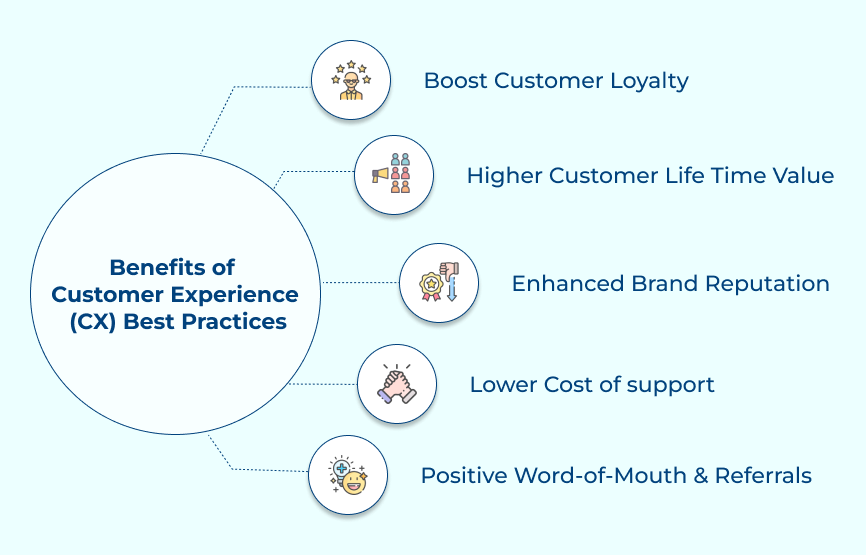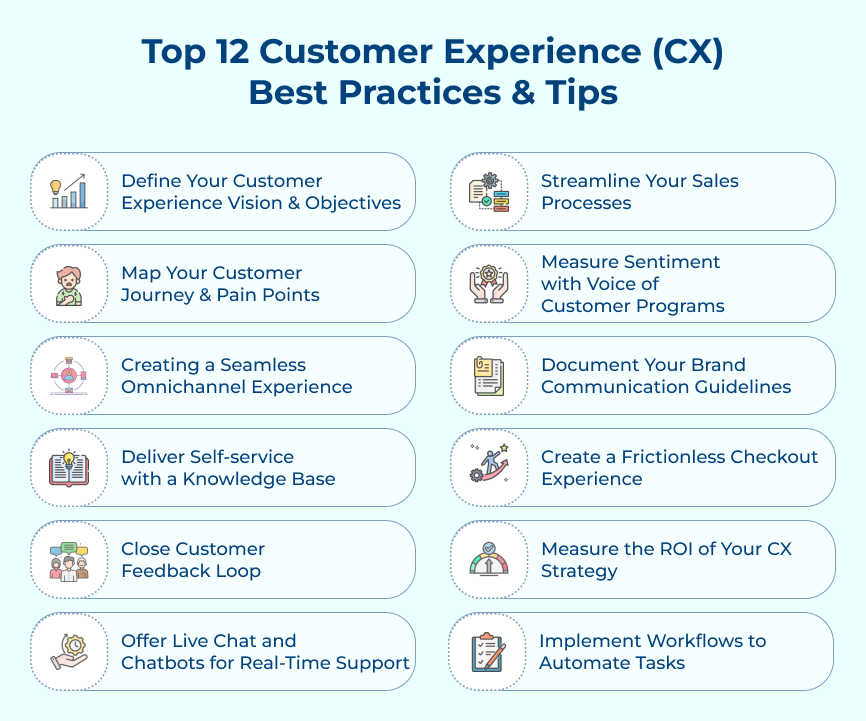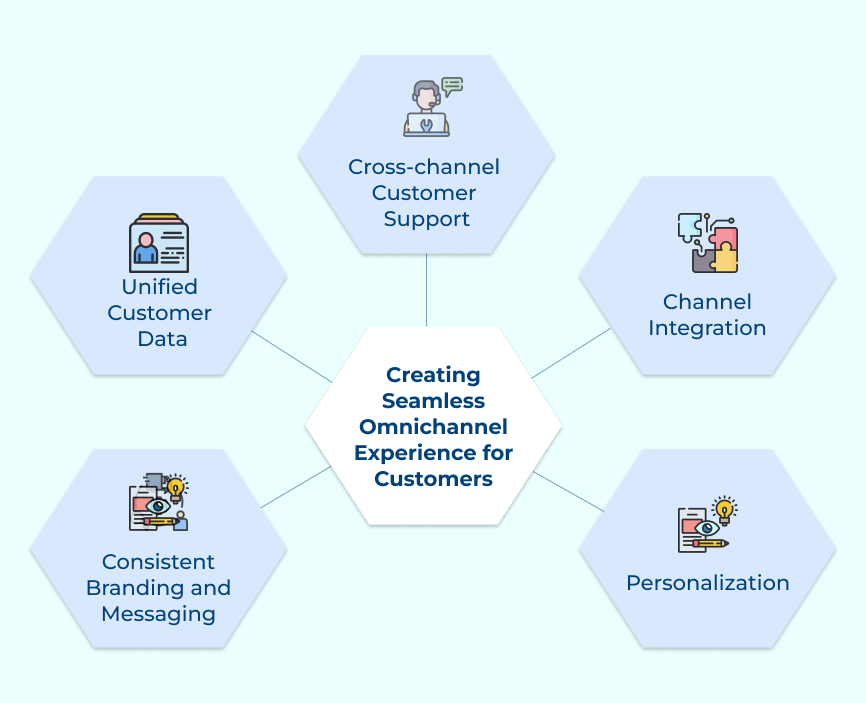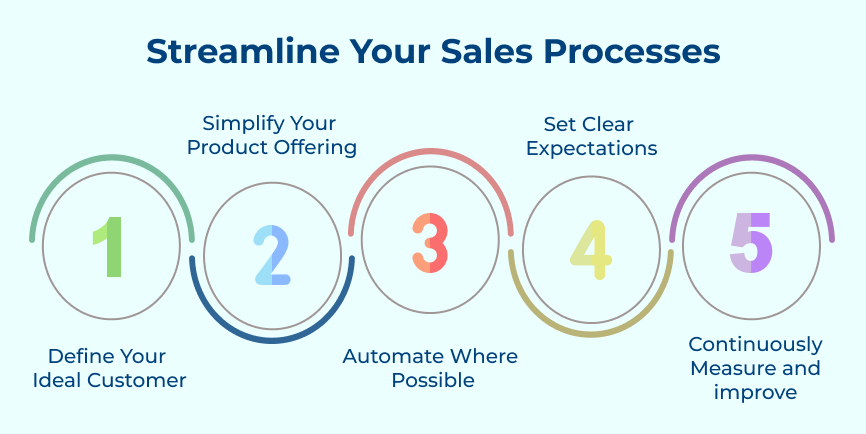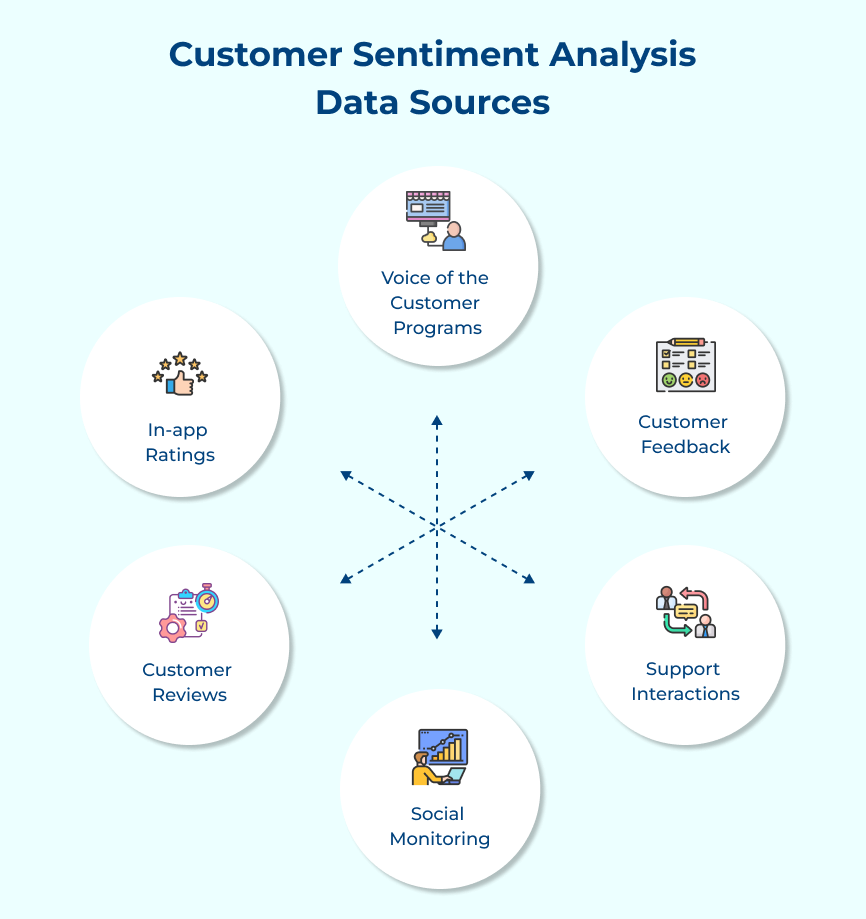You’ll have the ability to measure sentiment across all channels – web, email, SMS, app reviews and understand why people are giving particular feedback at any given time period. It will also help you discover trends around topics such as product features or pricing for better decision-making over time as well.
Actionable Tips:
- Define clear metrics: Determine key performance indicators (KPIs) that align with your customer experience goals, such as customer satisfaction scores, customer retention rates, or customer lifetime value.
- Regular performance tracking: Continuously monitor and analyze your chosen KPIs to assess the impact of your CX initiatives. Compare performance before and after implementing changes to quantify the ROI of your efforts.
- Iterative improvement: Use the insights gained from ROI measurement to refine your CX strategy over time. Focus resources on the initiatives that yield the highest returns and adjust your approach as customer needs evolve.
9. Document Your Brand Communication Guidelines
Well-documented brand communication guidelines are crucial in ensuring that your agencies are on the same page with messaging, tone and other basic corporate conduct expectations. It maintains consistency across all customer-facing channels so that there is no confusion or disruption in the user journey.
Getting the standards enforced will maintain the trust between your company and its consumers. It provides the tools and resources necessary to be able to swiftly adapt to the changes while building a better experience overall.
Actionable Tips:
- Identify repetitive tasks: Identify routine tasks that consume time and resources, such as data entry or follow-up emails. These are ideal candidates for automation.
- Workflow automation tools: Use workflow automation tools like Veemo or Omni 24 to create automated processes. For example, automate data syncing between CRM and email platforms to ensure accurate customer information.
- Enhance efficiency and consistency: Automating repetitive tasks not only increases efficiency but also reduces the chances of errors. The consistency contributes to a smoother customer experience and empowers your teams to focus on more strategic activities.
10. Create a Frictionless Checkout Experience
An easy way to improve customer satisfaction is by making sure that you have a seamless checkout process on your website or eCommerce store. If customers are repeatedly running into difficulty submitting orders or finding payment options then they are likely going to become frustrated which may lead them to reconsider using your products or services.
Using features such as Autofill forms can also streamline the purchase process and save the precious time of the customers. It automatically fills out personal information during checkout so the consumer does not need to manually enter data every time they make an online purchase.
Actionable Tips:
- Clear messaging framework: Develop a comprehensive set of brand communication guidelines that outline your brand’s tone, voice and messaging principles. It ensures consistency across all customer interactions.
- Training and onboarding: Provide training to your customer-facing teams on the brand communication guidelines. New hires should be onboarded with a clear understanding of how to communicate with customers in alignment with your brand’s identity.
- Regular review: Periodically review and update your brand communication guidelines. Accommodate shifts in customer preferences, industry trends and changes in your brand’s value proposition.
11. Measure the ROI of Your CX Strategy
Measuring the return on investment (ROI) of your customer experience strategy is essential for understanding what’s working and what’s not. You must understand which parts of the customer journey are most influential in determining overall satisfaction.
Start by defining and measuring success metrics either by surveys or other quantitative methods. Once you have baseline data for all the indicators, track and measure performance over time against them to identify opportunities for improvement.
Actionable Tips:
- Minimize form fields: Simplify the checkout process by requesting only essential information. Minimize the number of form fields customers need to fill out to expedite the process.
- Guest checkout option: Offer a guest checkout option that doesn’t require customers to create an account. Many customers prefer a quick and hassle-free checkout without the need for account creation.
- Clear progress indicators: Provide visual indicators that show customers their progress through the checkout steps. It reduces uncertainty and helps customers understand the remaining steps in the process.
12. Implement Workflows to Automate Tasks
Automation can go a long way toward improving customer experiences. Streamlining processes through automation-based workflows allows companies to reduce internal resource involvement. It also frees up additional bandwidth for customer service teams to focus on more strategic initiatives that will make an even greater positive impact on the customer experience.
Workflow automation can also be used to facilitate faster issue resolution processes – helping companies quickly address any problems customers may be having with their services or products. Pay attention to routine activities that take up significant amounts of manual labor hours each week; those are prime candidates for workflow automation implementations!
Actionable Tips:
- Gather employee insights: Encourage employees from various departments to share insights and suggestions for improving the customer experience. They often have valuable perspectives based on their interactions with customers.
- Regular innovation sessions: Conduct regular brainstorming or innovation sessions focused on identifying new ways to enhance the customer experience. Involve cross-functional teams to ensure diverse perspectives.
- Test and iterate: Implement changes in a controlled manner and gather feedback from customers to understand the impact. Use A/B testing or pilot programs to assess the effectiveness of new strategies before scaling them across the organization.
Customer Experience Best Practice Examples
Following are the real-life examples of brands that have implemented customer experience best practices in their business:
1. Amazon
Amazon pioneered 1-click ordering, personalized product recommendations and hassle-free returns. They continuously innovate to reduce friction in the shopping experience such as introducing Amazon Prime for fast, free shipping and easy video streaming.
These practices have led to unparalleled customer loyalty and repeat purchases. Amazon’s market dominance and consistent growth are largely attributed to their customer-centric approach, resulting in a $1.3 trillion market capitalization as of 2023.
2. Zappos
Zappos is renowned for its exceptional customer service, offering 24/7 phone support, a 365-day return policy and free shipping both ways. They empower employees to go above and beyond to ensure customer satisfaction, even if it means losing money on a transaction.
The approach has created a cult-like following among customers, leading to high retention rates and positive word-of-mouth marketing. Zappos was acquired by Amazon for $1.2 billion in 2009, largely due to its customer-centric culture.
3. Disney
Disney focuses on creating magical experiences through attention to detail, personalized interactions and seamless integration of technology. They use the MyMagic+ system to enhance park visits which allows for personalized itineraries, shorter wait times and cashless transactions.
Disney’s commitment to exceptional experiences has resulted in high customer satisfaction, repeat visits and strong brand loyalty. It has helped Disney in positioning itself as the world’s largest media conglomerate, with a market cap of over $300 billion.
4. Starbucks
Starbucks has invested heavily in its mobile app, offering features like mobile ordering, personalized recommendations and a rewards program. They also focus on creating a “third place” atmosphere in their stores, facilitating community and comfort.
The Starbucks app now accounts for over 25% of US company-operated transactions. Their focus on customer experience has led to consistent growth, with over 30,000 stores globally and a market cap of around $130 billion.
5. Ritz-Carlton
Ritz-Carlton is famous for its “Ladies and Gentlemen serving Ladies and Gentlemen” philosophy. They empower employees with a $2,000 budget per guest to resolve issues without managerial approval. They also maintain detailed guest preferences to personalize future stays.
The approach has resulted in exceptionally high customer satisfaction and loyalty in the competitive luxury hotel market. Ritz-Carlton consistently ranks among the top luxury hotel brands worldwide, commanding premium prices and maintaining high occupancy rates.
Embrace CX Best Practices to Drive a Competitive Edge
Customer experience (CX) encompasses every touchpoint a customer has with your business, resulting in an overall impression of your brand. The key is to employ strategies that align with customer needs and preferences while also allowing for flexibility when required. Empowering employees to make decisions that impact CX, monitoring data in real-time and leveraging technology are essential elements of a successful CX strategy.
Companies should focus on building trust with customers by providing consistent experiences, addressing complaints promptly and personalizing engagements where possible. The customer experience best practices help the brands ensure they meet customer expectations, generate ROI from CX investments and get an edge over competitors.






